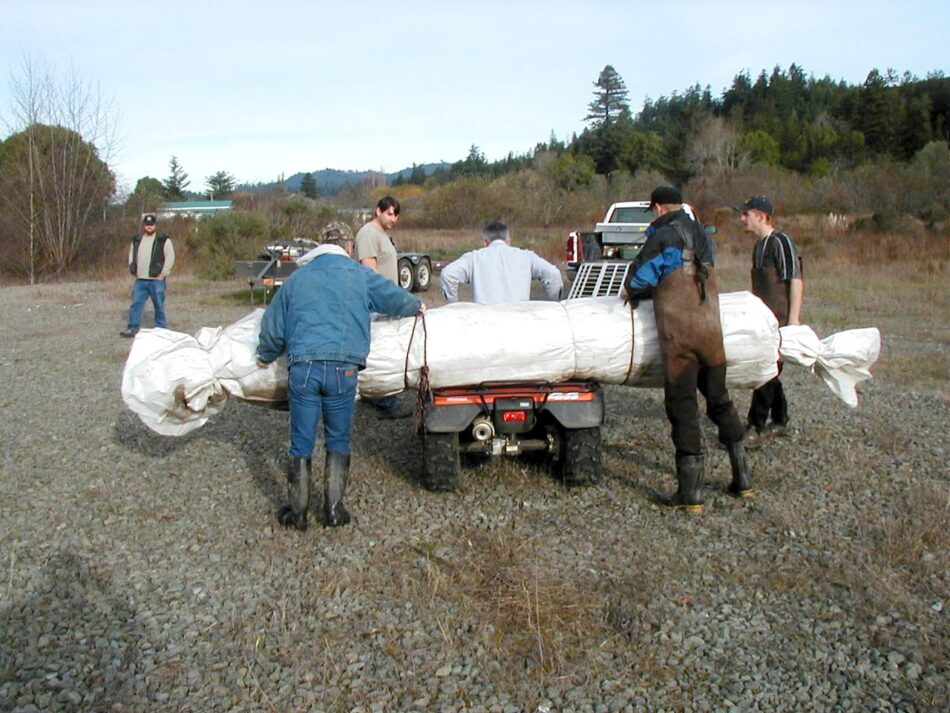
1.) The single closed end (SCE) AquaDam has arrived at needed area and now needs to be positioned at its starting bank. AquaDams are shipped rolled-up like a carpet roll, wrapped in a protective covering, and have lifting ropes/straps.
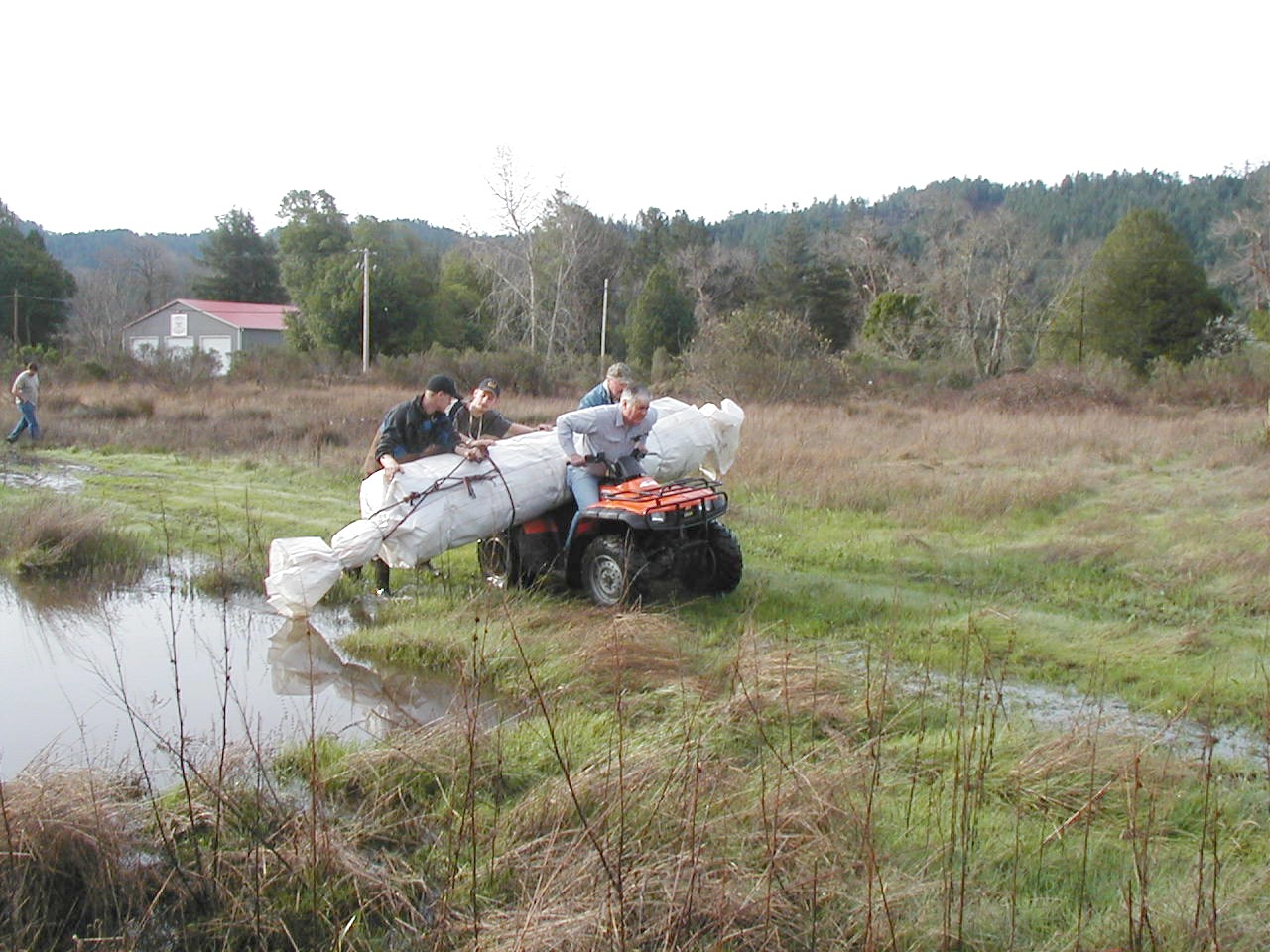
2.) Workers use a quad to transport the AquaDam to its starting bank.
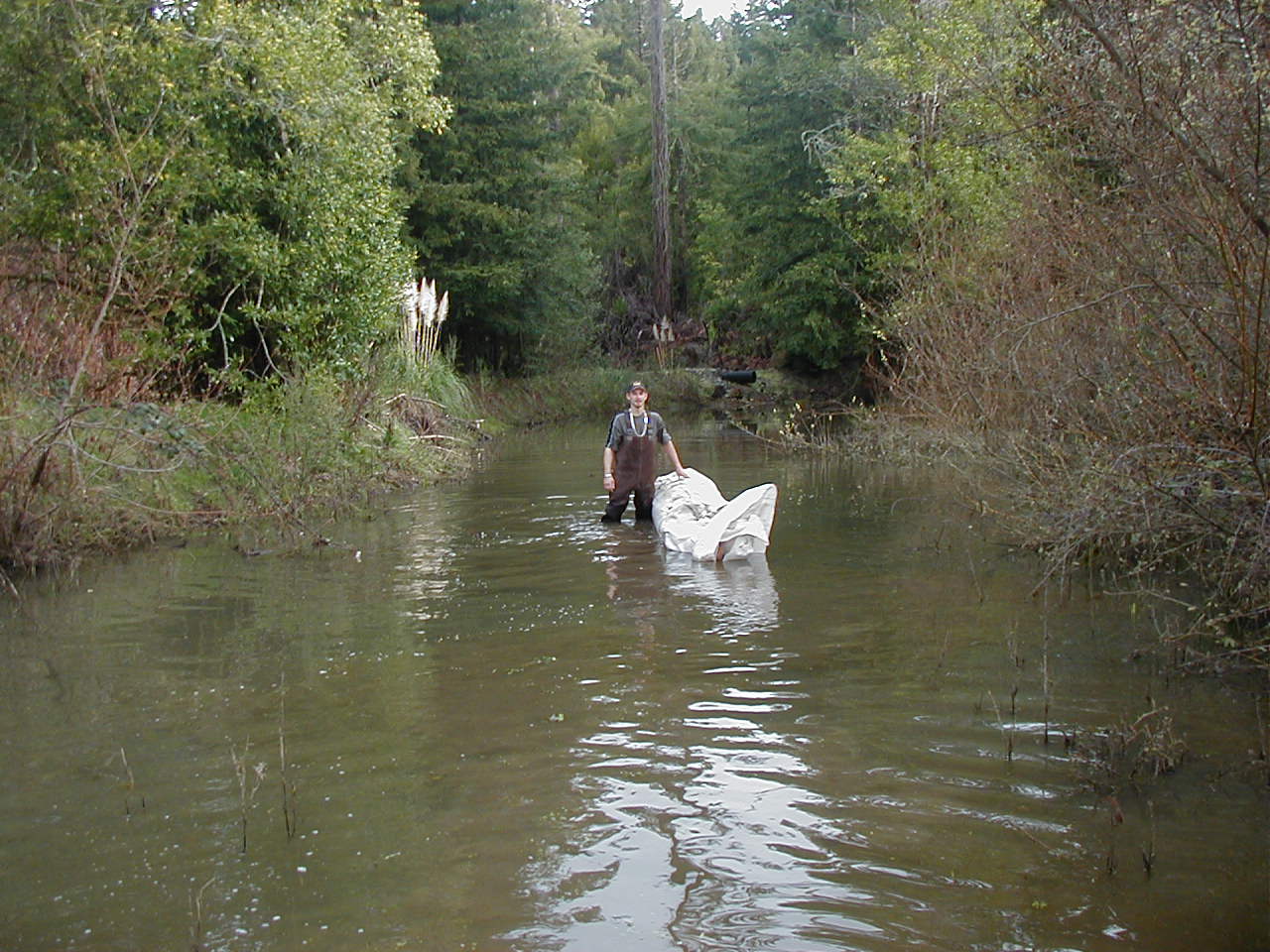
3.) A worker pulls the AquaDam upstream to the desired location to launch it from. AquaDams are made of light weight flexible materials and will float when empty in deep enough water.

4.) A worker stands in the breach in the levee that caused the flooding.
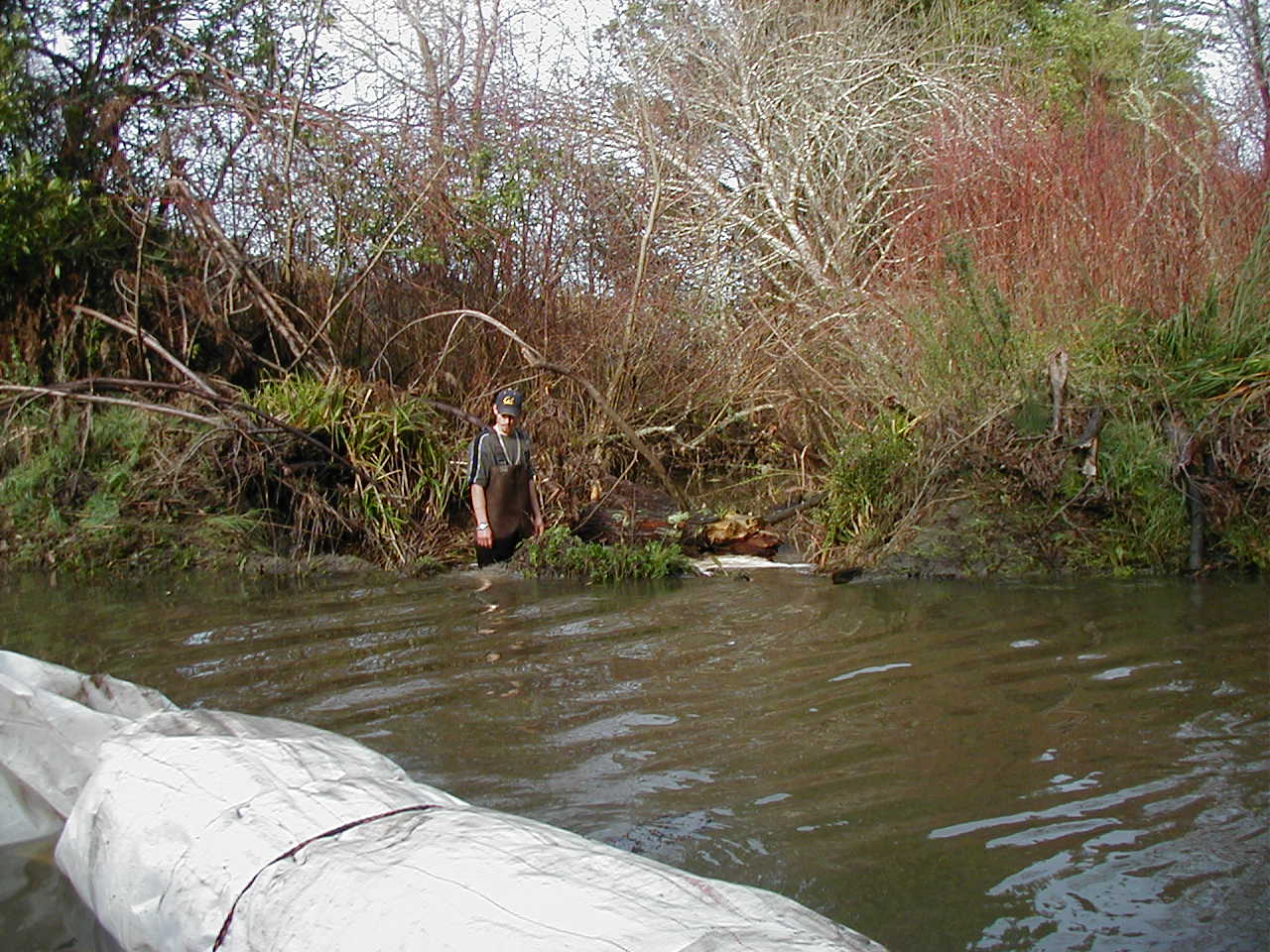
5.) Looking at the breach from the opposite bank. That is a large breach, the worker is over 6ft tall.
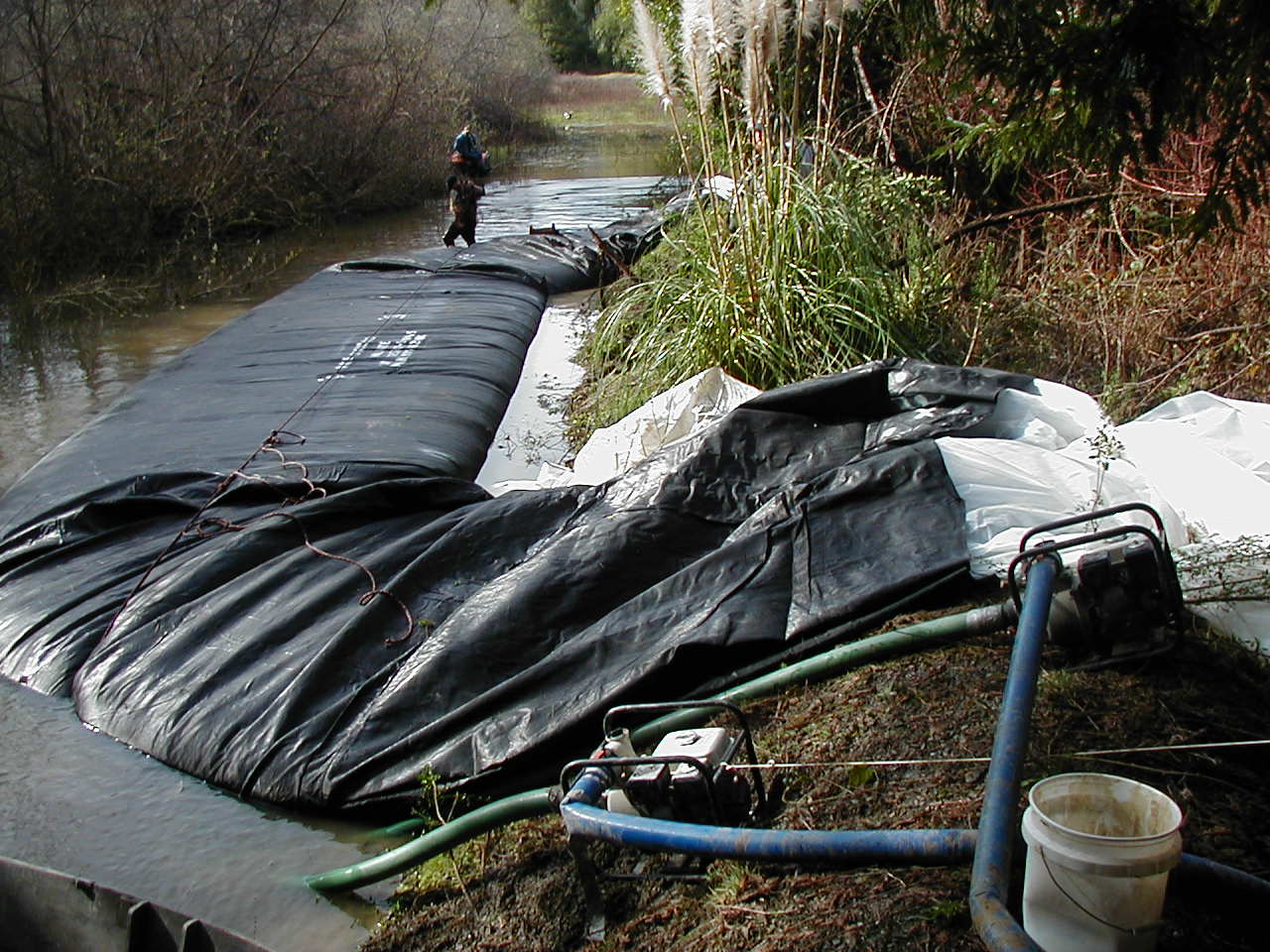
6.) The SCE AquaDam has been installed and is being filled with water. This photo was taken standing at the starting bank. A starting bank for a SCE AquaDam needs to be elevated higher than the body of the dam along its given path. The starting point (open end) and fill-tubes of a SCE AquaDam must be elevated higher than the full height of dam along its given path, seen to the right. An AquaDam will only reach its full height at the lowest elevation along its given path.
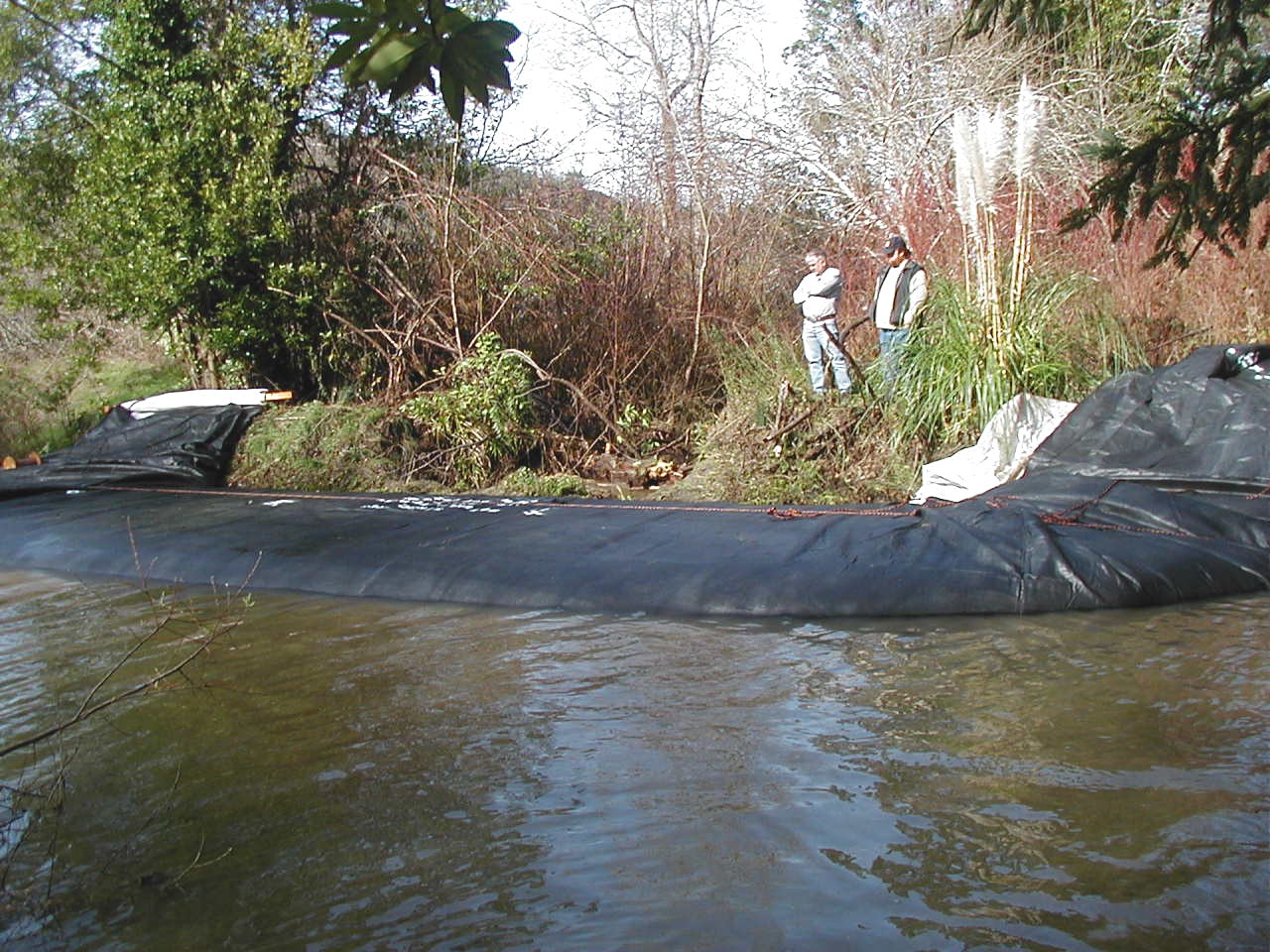
7.) The SCE AquaDam continues to fill and has a little over a foot of head above the surrounding water. This AquaDam has been installed into a horseshoe/”U” shape configuration.
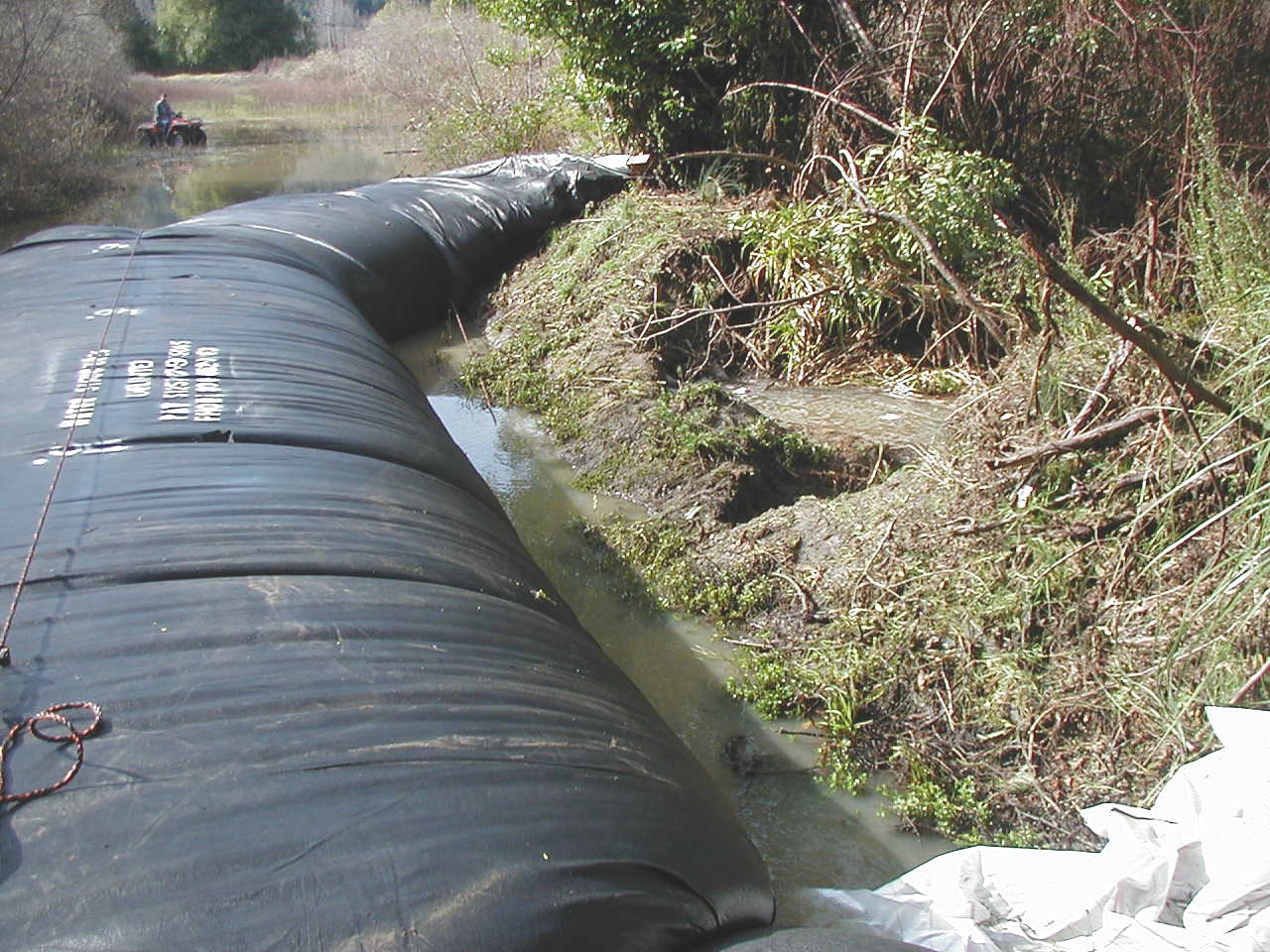
8.) Here we can see that the breach has been isolated from the main body of water and the water in the work area is slowly draining off.
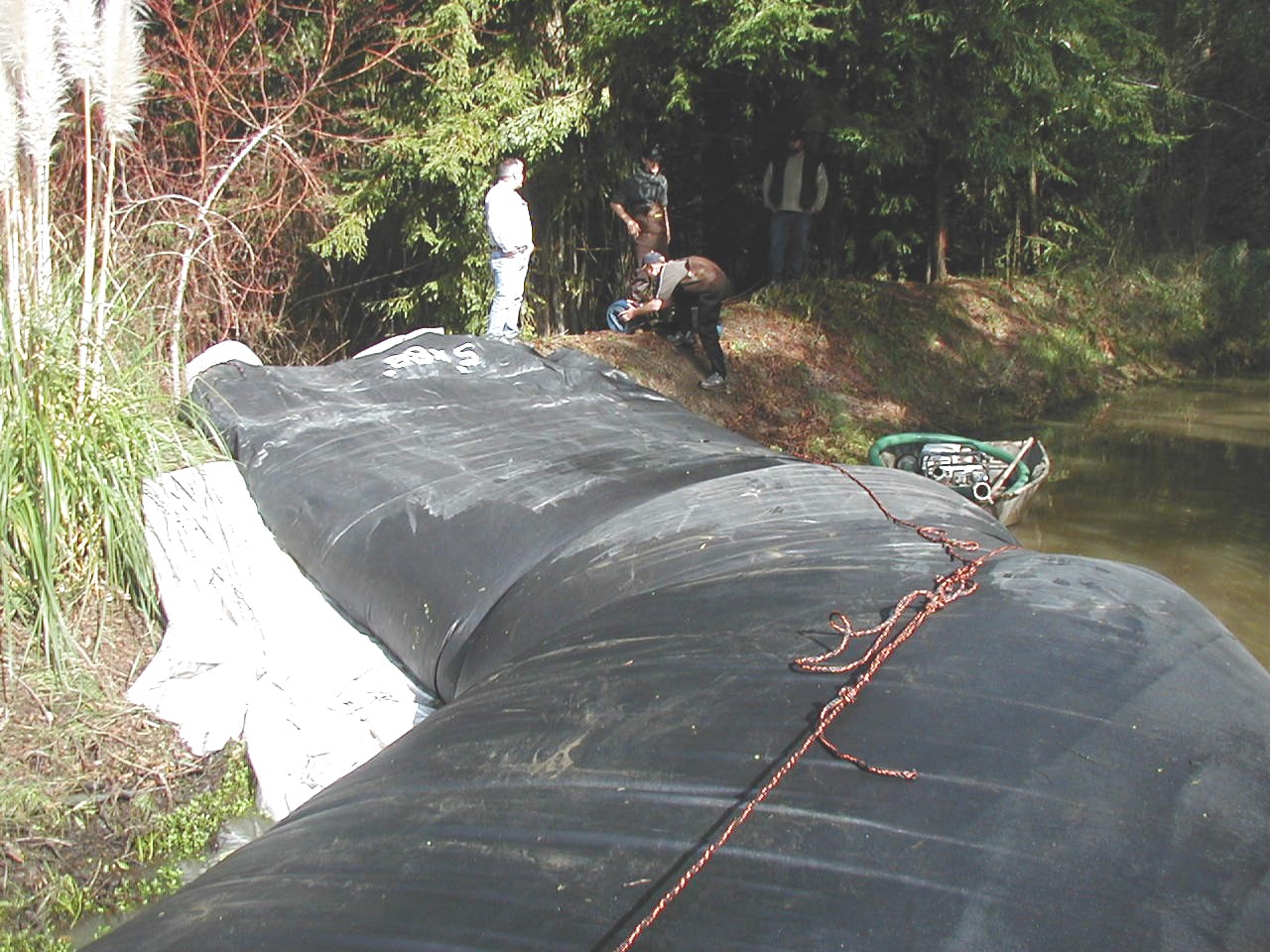
9.) Looking upstream at the starting bank and the SCE AquaDam after the dam was full. Workers are picking up their tools that they used to install the dam.
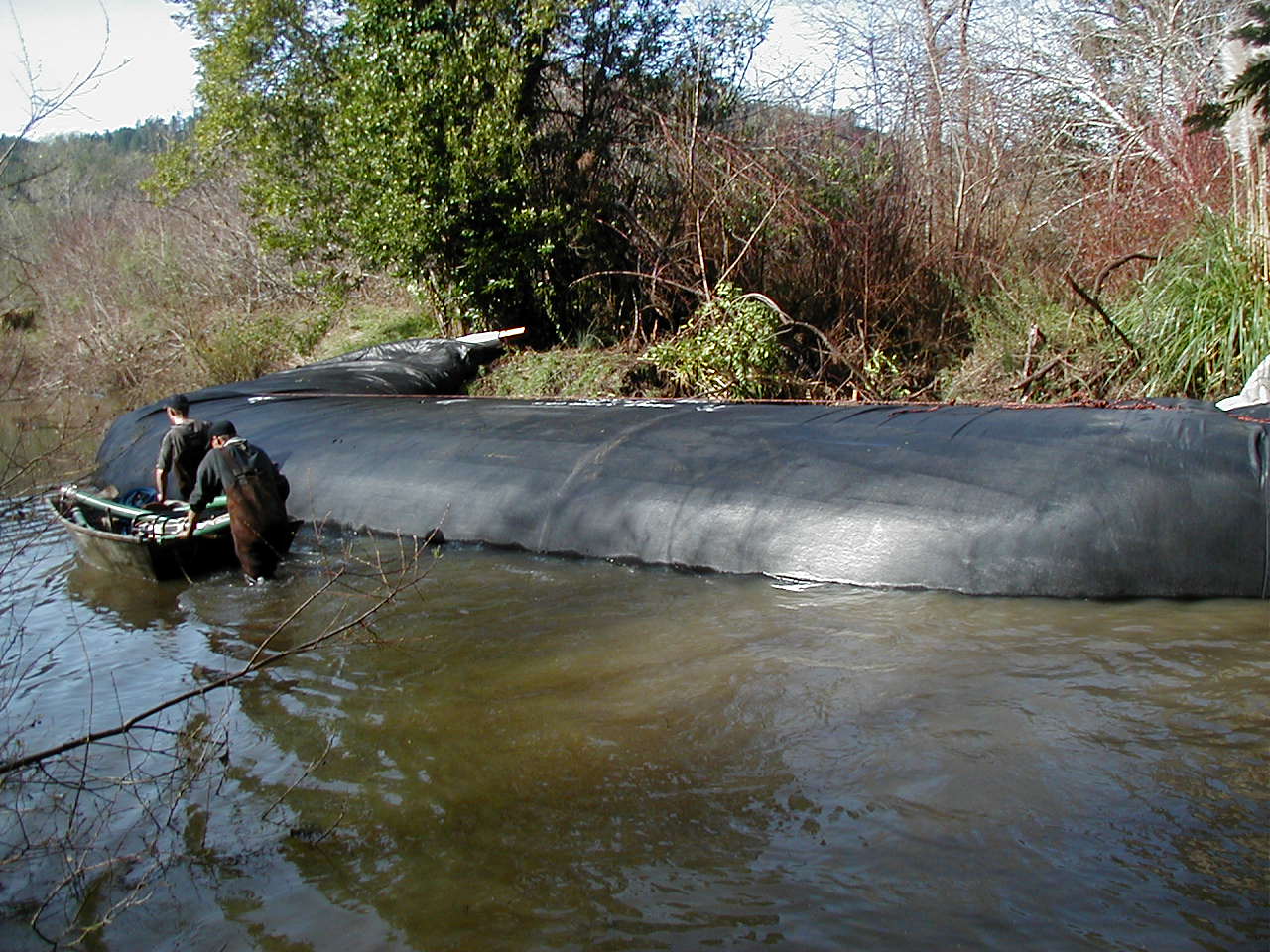
10.) This AquaDam was likely a 6ft tall SCE unit as these workers are over 6ft tall.
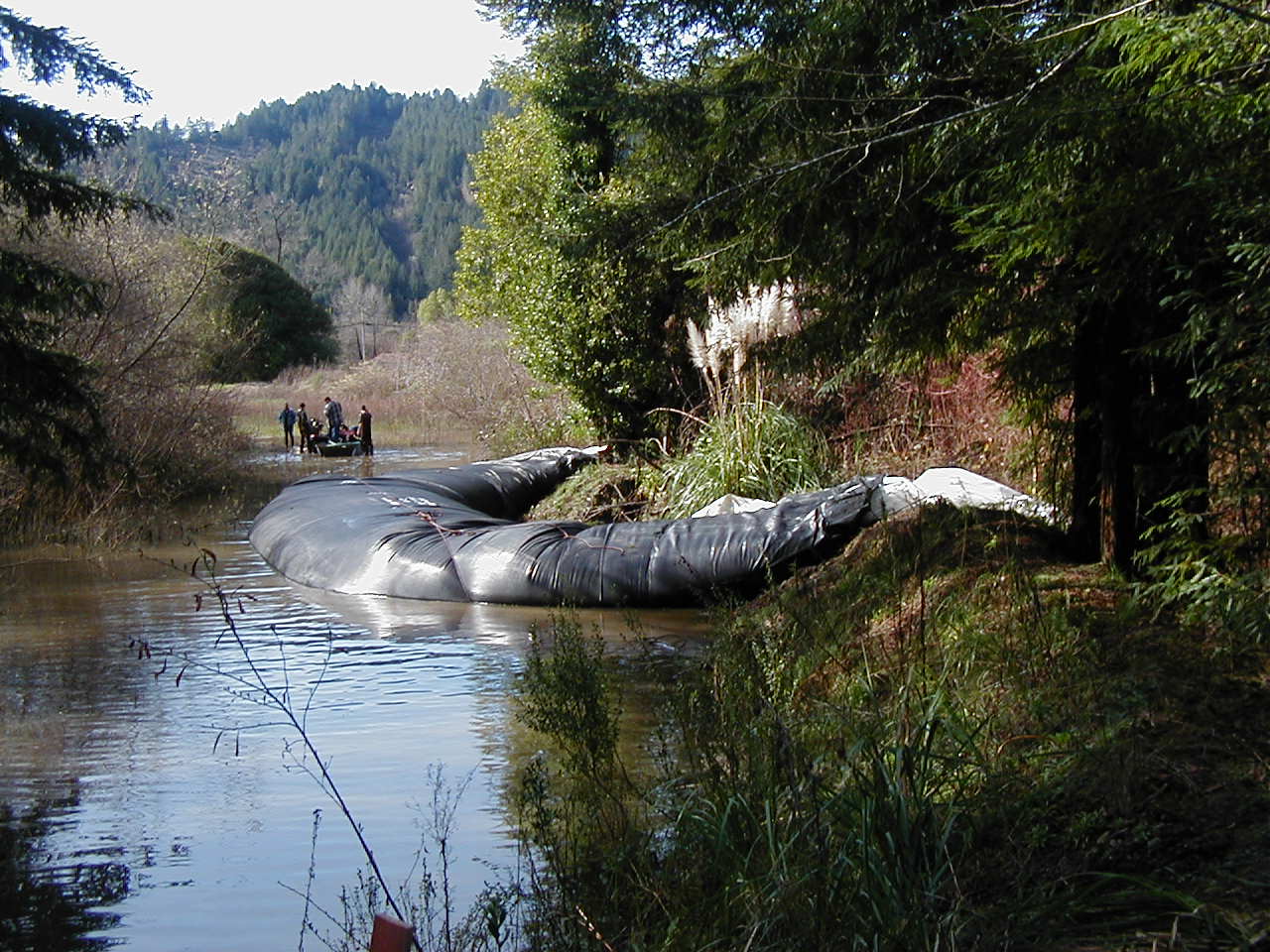
11.) Looking downstream at the SCE AquaDam cofferdam system, in action.

12.) A close photo of the work area after the AquaDam had been installed for a while.
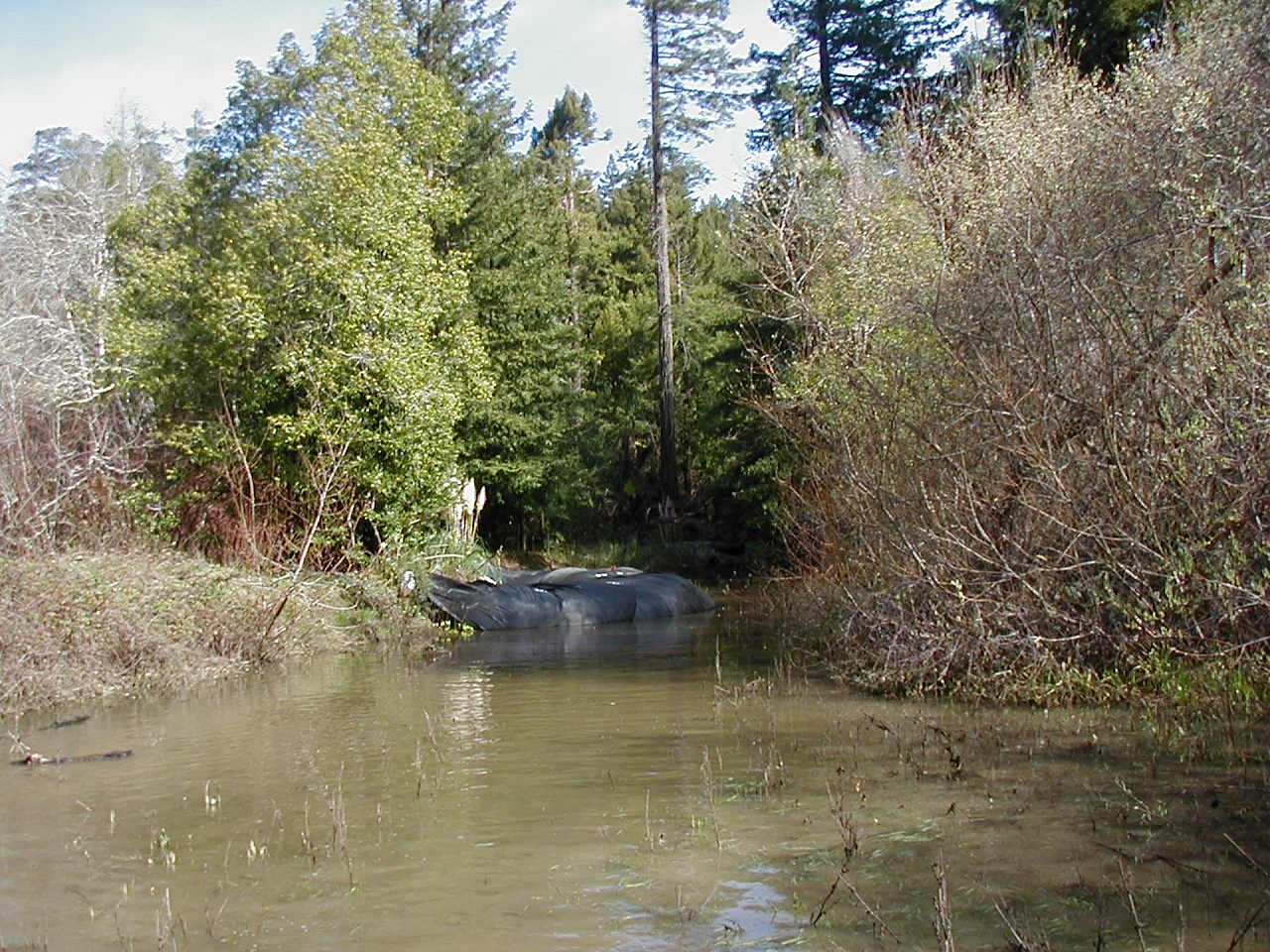
13.) Looking upstream at the SCE AquaDam. Great job!
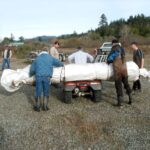
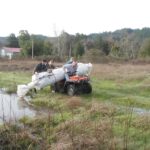
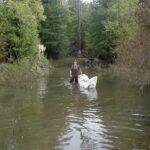

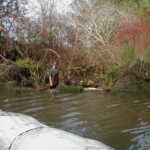
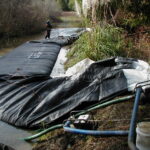
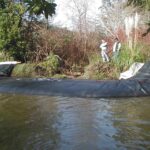
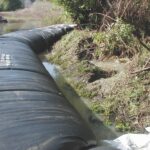
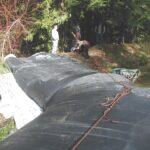
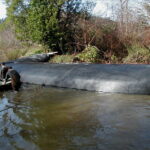


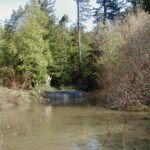
Single Closed End (SCE) AquaDam, Levee Breach, Emergency Flood Control, Horseshoe/”U” Shape Configuration
